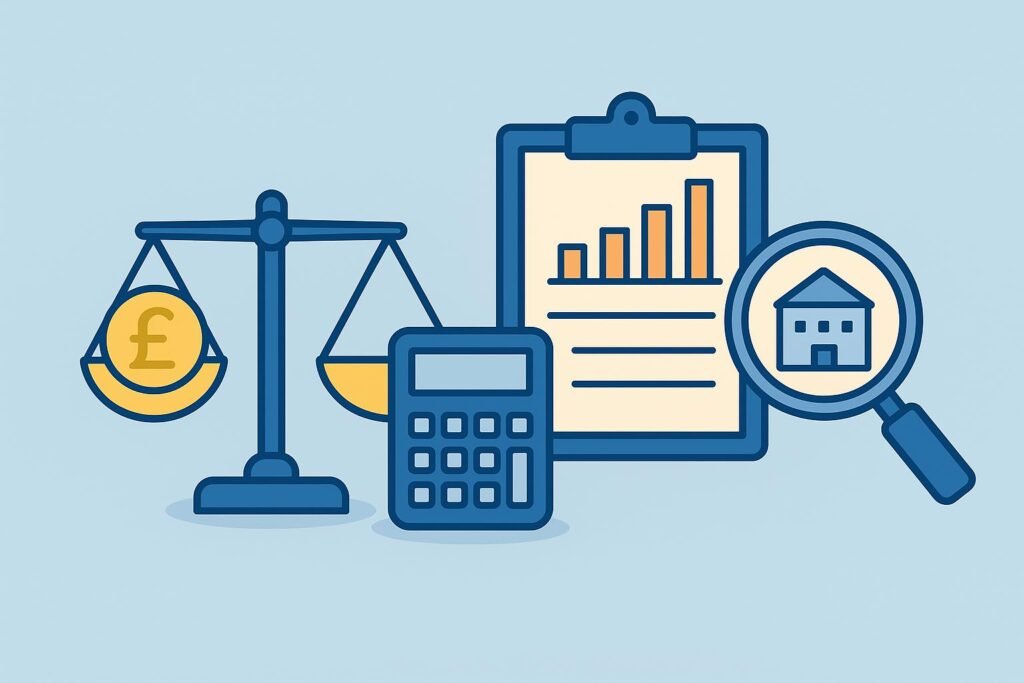
When you buy or sell a business, the key question is simple: how much is it worth?
There is no single formula that applies to every private business. Sellers want to push the price up, while buyers aim to bring it down.
Some elements are easy to value, such as stock or fixed assets (land, machinery, equipment). But a large part of a business’s value usually lies in less tangible factors.
Understanding business value
Intangible assets include goodwill, trademarks, and reputation. These are often the hardest parts of a business to measure. In practice, the price depends on how motivated a buyer is to acquire the business.
For sole traders and very small firms, valuation can be even harder. The goodwill may be tied directly to the individual owner, which reduces what a buyer is prepared to pay unless there is a clear plan to transfer clients and knowledge.
To make sense of value, owners and advisers use a range of methods — from earnings multiples to the cost of recreating the business from scratch. These approaches, along with wider market conditions, all influence the final price.
Table of contents
- Common business valuation methods
- Earnings multiples
- Entry cost
- Asset valuation
- Discounted cashflow
- Industry valuations
- Other considerations
- Economic climate
- Fixed assets
- Intangible assets
- Reason for sale
- Reality
Common business valuation methods
| Method | How it works | Relevance for small firms/sole traders |
|---|---|---|
| Earnings multiples | Value based on a multiple of annual post-tax profits | Multiples are usually lower, based on sustainable earnings |
| Entry cost | Estimate of cost to set up a similar business from scratch | Useful for service firms where goodwill and customer base matter |
| Asset valuation | Net realisable value of assets such as property, equipment, stock | Often limited to resale value of tools, vehicles or small stock base |
| Discounted cashflow | Future cashflow and terminal value discounted back to present | Rarely used unless contracts guarantee future income |
| Industry valuations | Based on sector-specific rules of thumb, e.g. multiple of fees | Could be applied to recurring contracts or client lists |
Earnings multiples
How it works: Value based on a multiple of annual post-tax profits
Relevance: Multiples are usually lower, based on sustainable earnings
Entry cost
How it works: Estimate of cost to set up a similar business from scratch
Relevance: Useful for service firms where goodwill and customer base matter
Asset valuation
How it works: Net realisable value of assets such as property, equipment, stock
Relevance: Often limited to resale value of tools, vehicles or small stock base
Discounted cashflow
How it works: Future cashflow and terminal value discounted back to present
Relevance: Rarely used unless contracts guarantee future income
Industry valuations
How it works: Based on sector-specific rules of thumb, e.g. multiple of fees
Relevance: Could be applied to recurring contracts or client lists
Earnings multiples
What the ratio shows
Multiples of earnings are a common valuation method for companies with an established financial history. The Price/Earnings (P/E) ratio represents the value of the business divided by its post-tax profits.
Example calculation
For example, if your company generates post-tax profits of £100,000 and you receive an offer of £500,000, the P/E ratio is 5 (£500,000 ÷ £100,000). The calculation is simple; setting the right multiple is not.
Industry differences
There is no standard P/E ratio for all businesses. High tech and IT companies often command higher multiples than brick-and-mortar firms such as estate agencies. Businesses with rapidly growing profits also attract higher multiples.
Small business adjustments
Reduce headline P/E ratios from the financial press when valuing a small business. Smaller firms are riskier: revenue may rely on a single product or a few key people. If the market changes or key people leave, profits can fall quickly and the business may be at risk.
Larger companies with many products and teams can absorb these shocks more easily. The higher risk in small business deals usually results in a lower P/E ratio.
Rule of thumb
As a very general guide, advisers might suggest 4 to 10 times annual post-tax profit. For sole traders, the multiple is often lower and driven by sustainable earnings (what a buyer could realistically take home).
Entry cost
This method estimates the cost to set up a similar business to the one being sold. It includes developing a customer base and reputation, recruiting and training staff, purchasing assets, and creating products or services.
It often suits small service businesses — trades, consultants, local firms — where tangible assets are limited but goodwill and customer relationships carry value.
Asset valuation
This approach suits established companies with significant tangible assets, such as property companies. You calculate the net realisable value of all assets.
For sole traders, it may be as simple as the resale value of equipment, vehicles, or a modest stock base, rather than property or heavy machinery.
Discounted cashflow
DCF values a company by estimating future cashflow over a period and adding a terminal value at the end of that period. You discount these amounts to arrive at a present value.
Setting a reliable terminal value is difficult because it depends on the cashflow assumptions. DCF can suit firms with potential but limited history, such as online businesses. For very small businesses, it is rarely used unless contracts guarantee future income.
Industry valuations
In sectors where businesses change hands frequently, industry rules of thumb are common. Examples include recruitment agencies and accountancy practices.
Accountancy firms are often valued on a multiple of recurring client fees. Some small recruitment agencies may be valued on a multiple of gross margin. For sole traders, the equivalent could be a resale price for a client list or book of recurring contracts.
Other considerations
Economic climate
Buyers tend to be cautious during downturns. When the economy is strong, more firms look to grow by acquisition and finance is easier to secure. With more buyers in the market, prices usually rise.
Fixed assets
You can value many assets using the original purchase price and a depreciation calculation. But property may have risen in value, and vehicles or specialist equipment may be worth less than book value if sold today.
For sole traders, fixed assets often mean a van, specialist tools, or IT equipment — typically valued at current market prices rather than book value.
Intangible assets
Some of the most valuable parts of a business never appear on the balance sheet: trademarks, reputation, brand, key people, and the size and quality of the customer base.
In small firms, these assets can be hard to transfer. Buyers will test whether goodwill sits with the business or with the owner.
Reason for sale
If a sale is forced, buyers will discount most valuation methods to secure a quick deal. For sole traders, if the business cannot function without the owner, the valuation may fall unless a clear transition plan is in place.
Reality
A business is worth what someone will pay for it. Many owners are attached to their businesses and set values above what market conventions support. If you plan to sell, be realistic about value before going to market.
Most of all, make sure you ask your accountant to help you arrive at a realistic valuation, or to answer questions when you deal with a potential buyer.
For a broader overview, see the British Business Bank’s guide to valuing a business.




